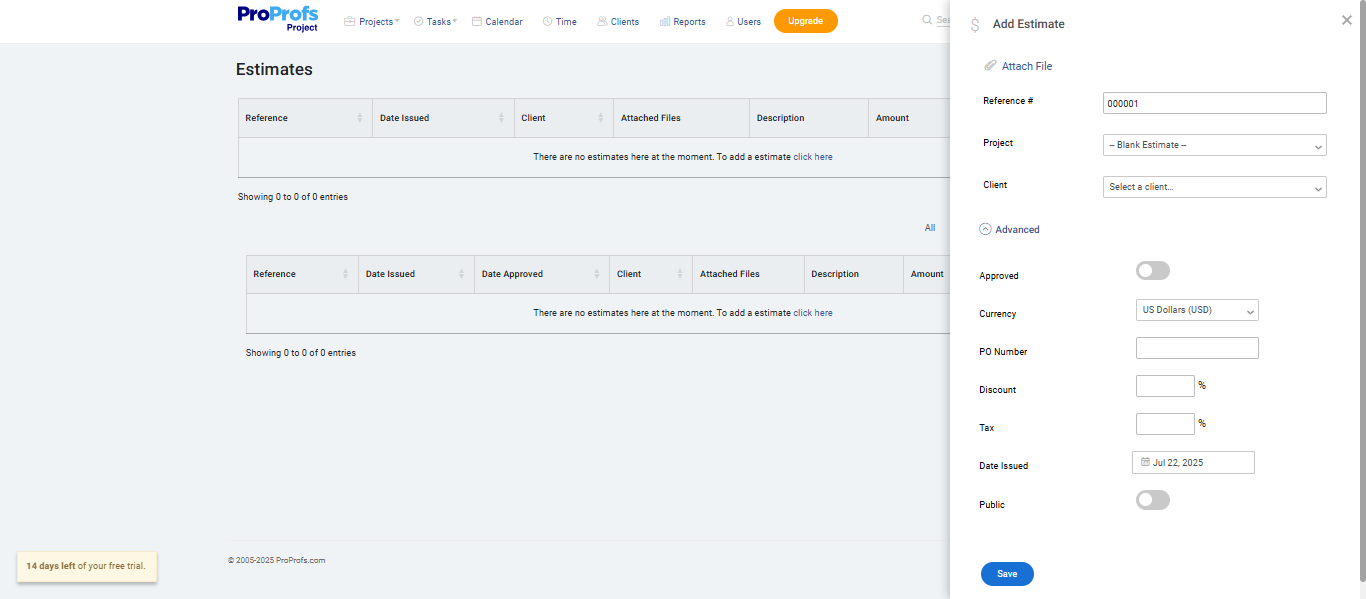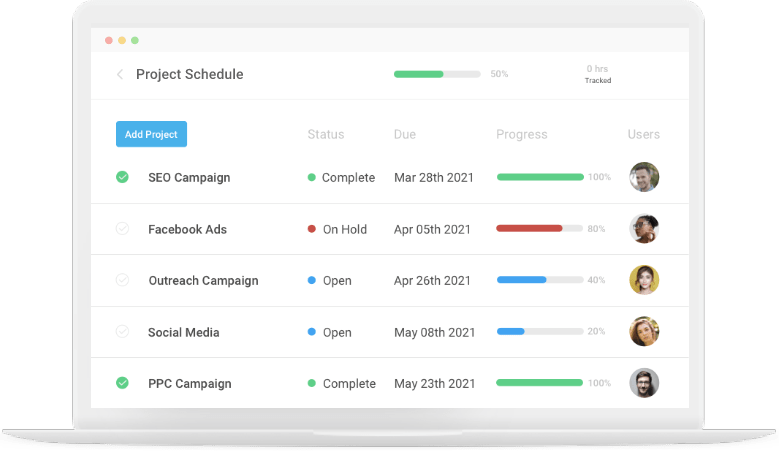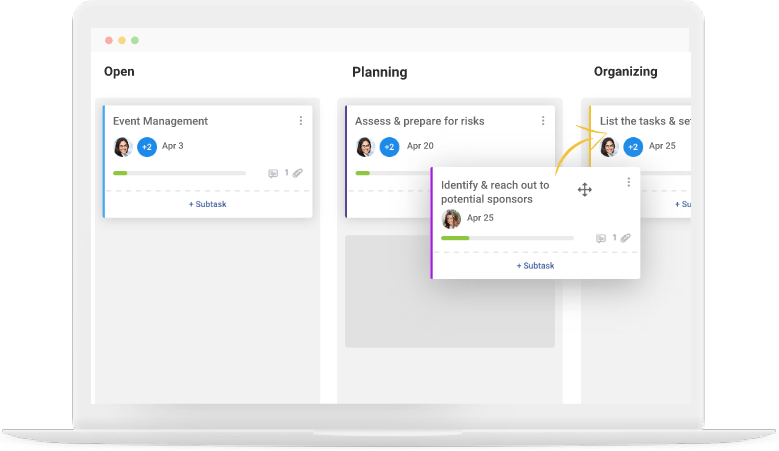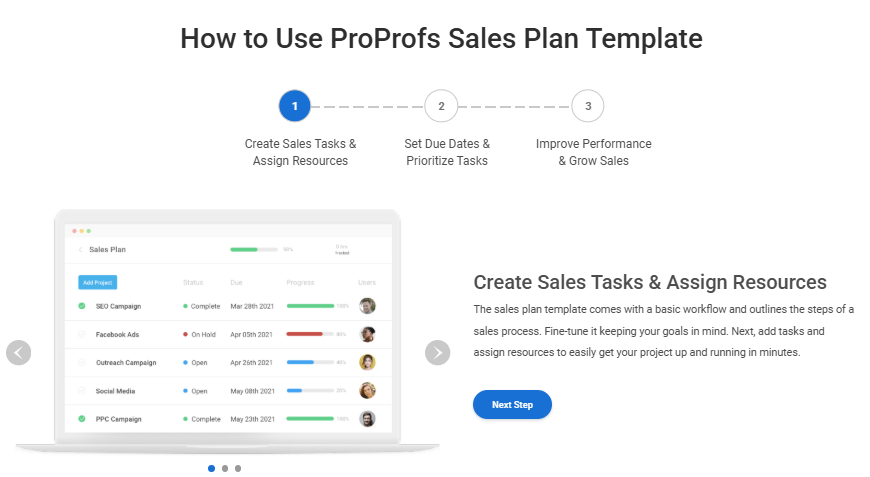When I first stepped into project management, I thought it would be simple: build a plan, stick to deadlines, and keep everyone happy. Turns out, it’s anything but easy.
One month, I was running an internal team restructure. The next, I was building out a client website. That’s when it clicked, internal vs external project management are two completely different games.
If you’ve worked both sides, you know the shift. Internal work is all about office politics, getting departments on the same page, and making sure changes actually stick.
Client work demands precision, clear communication, and meeting expectations when the clock and the contract are both in play. The mindset, the measures of success, and the way you manage people operate on very different levels.
In this guide, I’m breaking down what truly separates internal vs external project management, the mistakes that mess people up, and the strategies that keep you in control from start to finish. But before that, here’s a short video on what project management really is.
What Exactly Are Internal and External Project Management?
Let me break this down in the simplest terms possible.
Internal project management focuses on projects within your organization. That could mean upgrading systems, improving processes, moving offices, or rolling out new ways of working across teams. You’re working with colleagues, internal stakeholders, and company resources to achieve business objectives that primarily benefit your organization.
External project management involves delivering projects for clients, customers, or external stakeholders. This includes client websites, consulting engagements, software implementations for customers, or any project where you’re being paid to deliver specific outcomes to someone outside your company.
The key distinction? Internal projects improve your organization’s capabilities or operations, while external projects generate revenue by delivering value to paying clients or customers.
Key Differences Between Internal and External Project Management
Knowing the differences in internal vs external project management is more than a theory. They shape how you plan, execute, and measure every project you run.
Here’s a quick overview of the main distinctions to help you identify which approach fits your current project:
| Aspect | Internal Project Management | External Project Management |
|---|---|---|
| Primary Goal | Improve organizational capabilities | Generate revenue through client delivery |
| Stakeholders | Colleagues, department heads, internal teams | Clients, customers, external partners |
| Communication Style | Informal, collaborative, flexible | Formal, documented, structured |
| Budget Control | Flexible, subject to internal priorities | Fixed, tied to contracts and profitability |
| Timeline Pressure | Moderate, internal deadlines | High pressure, contractual obligations |
| Success Measurement | Efficiency gains, cost savings, KPIs | On-time, on-budget, scope delivery |
| Risk Management | Flexible, more room for adjustments | Strict, contractual penalties possible |
| Documentation | Less formal, internal use | Detailed, signed agreements required |
| Authority Structure | Influence without authority common | Clear client hierarchy and payment pressure |
| Career Perception | Operational improvement focus | Revenue-generating, client-facing prestige |
1. Stakeholder Dynamics and Communication
In internal project management, you are often navigating office politics and competing priorities. You might have to influence without direct authority and convince department heads who have their own agendas. I’ve seen promising internal projects stall for months simply because finance and operations couldn’t agree on requirements.
External project management usually comes with a clearer hierarchy. A paying client is expecting results, which creates built‑in accountability. But that also means you need formal documentation, signed approvals, and strong change‑management processes to keep scope creep under control.
2. Communication and Documentation Requirements
Internal projects often move forward through quick conversations, a chat in the hallway, a quick Slack message, or an impromptu meeting.
External projects demand a formal paper trail. Every decision needs to be documented, change requests must be approved in writing, and status updates should be detailed and consistent. It’s not red tape; it’s your legal and professional safety net.
3. Timeline and Pressure Differences
External project management typically runs at a faster pace with tighter deadlines. Client requests tend to be urgent, and contractual commitments mean delays can have serious consequences.
Internal project management usually offers more predictable timelines. But priorities can shift overnight if a new business need pops up, and your project can lose momentum fast.
4. Success Metrics
This is where internal vs external project management really splits. External projects are measured by the classics: on‑time delivery, staying within budget, and meeting scope. Client satisfaction is the ultimate win.
Internal projects need more creative metrics. You might measure efficiency gains, cost savings, improved workflows, or employee satisfaction. The challenge is these benefits often take months to show, making quick wins harder to prove.
5. Resource Management
External projects run on fixed budgets tied to client contracts. Overspending cuts directly into profit, so you know exactly what you’re working with from day one.
Internal projects have more moving parts. Budgets and resources can be reallocated at any time. That IT upgrade you’ve been planning can be paused if sales suddenly needs a CRM overhaul. You need flexibility and resourcefulness to keep things moving.
6. Risk Management
External project management has strict risk expectations because of contractual obligations. You’ll need detailed risk registers, mitigation plans, and regular updates to keep clients informed.
Internal project management can be more flexible, but disciplined risk planning still pays off. Internal stakeholders may be more understanding, but they still expect you to manage potential setbacks well.
7. Career Impact and Perception
External roles can appear more prestigious because they’re client‑facing and tied to revenue. Internal roles don’t always get the same spotlight, but they build equally valuable skills like organisational change management and cross‑functional influence.
Both paths offer transferable skills. External project management sharpens client negotiation and delivery expertise, while internal project management deepens your ability to navigate complex organisations and lead change from within.
Common Internal vs External Project Management Challenges
From my own experience and from talking with other project managers, I can tell you that internal vs external project management comes with its own set of headaches. Here are the big ones you’re most likely to face and how to handle them.
1. The Two‑Plans Problem
Too many project managers keep two versions of the schedule, one “real” internal plan and a client‑friendly version that hides delays or messy details. It feels like a quick fix, but it’s a fast track to confusion, mistakes, and broken trust.
A better way: work from one master plan and use filtered views for different audiences. With the right tool, like ProProfs Project, you can control exactly what each stakeholder sees without creating duplicate documents. It keeps everyone aligned and still protects sensitive internal details.
2. Planning Without Complete Information
External projects often put you in a tough spot. You’re expected to give detailed estimates before a vendor is assigned or before the client has fully defined their requirements. In other words, you have to plan accurately with incomplete information.
Solution: Tap into your internal experts, document your assumptions, and build in realistic buffers. Be upfront with stakeholders about what’s known, what’s not, and how that uncertainty might affect the timeline.
A tool like ProProfs Project can make this easier by letting you create and adjust estimates quickly, track them against actual progress, and update stakeholders in real time as new details come in.

3. Managing Resistance vs. Managing Expectations
In internal project management, you’ll often face resistance to change, unclear authority, and competing priorities. People may nod along in meetings but drag their feet when it comes to actual delivery.
External project management flips the challenge. Here, the pressure comes from high client expectations and contractual obligations. Clients expect results no matter what’s happening behind the scenes.
Strategy: For internal projects, invest in strong stakeholder engagement and change‑management efforts right from the start. For external projects, set clear communication rules early and keep expectations realistic with regular, transparent updates.
Free Project Management Templates to Save Time and Bring Clarity
One of the biggest hurdles when working on internal vs. external project management is getting started with the right structure. Instead of building everything from scratch, templates give you a foundation that saves time and reduces errors.
Whether you’re handling an internal project management initiative like a system upgrade or an external project management engagement with a client, having a predefined framework helps you move faster and stay consistent.
1. Project Schedule Template
A schedule is at the heart of both internal and external projects. This template helps map out timelines, allocate resources, and keep milestones visible. In internal project management, it prevents delays caused by shifting departmental priorities. In external project management, it provides a clear roadmap for clients, showing progress and accountability.

2. Event Planning Template
Events require careful coordination of logistics, timelines, and budgets. Internally, companies can use this template for office moves, annual meetings, or culture initiatives. Externally, project managers can apply it to client-facing events or product launches where timing and delivery must be flawless.

3. Sales Plan Template
Sales projects often move quickly and involve multiple stakeholders. This template helps you organize sales processes, track milestones, and align teams toward hitting revenue goals. For internal project management, it keeps sales and operations working in sync. For external project management, it ensures agencies or client teams can track progress clearly and meet agreed-upon targets.

8 Best Practices for Internal and External Project Management
Internal vs external project management needs different strategies. What works for one won’t always work for the other, so here’s how to approach each if you want the best results.
Internal Project Management Best Practices
1. Build coalition early: Identify key influencers and get them on board before you need their support. I’ve learned that internal project management succeeds or fails based on relationships, not just technical execution.
2. Create visible value quickly: Look for quick wins that demonstrate immediate benefits. Even small improvements can build momentum for larger changes in internal project management.
3. Establish clear governance: Without external client pressure, internal projects can drift. Create regular checkpoints, escalation paths, and decision-making processes.
4. Track indirect benefits: Develop KPIs that capture efficiency gains, cost savings, or quality improvements. These metrics help justify internal project management value to leadership.
External Project Management Best Practices
5. Document everything: Written agreements, change requests, and stakeholder approvals protect both you and your client. This isn’t bureaucracy, it’s professional protection in external project management.
6. Manage scope aggressively: External projects live or die by scope management. Establish clear boundaries and a formal change control process from the beginning.
7. Prioritize client communication: Regular updates, proactive problem-solving, and transparent reporting build trust and prevent surprises in external project management.
8. Plan for handoff: External projects often end with knowledge transfer or ongoing support requirements. Plan these elements from project initiation.
When to Choose Internal vs External Project Management Approaches
Choosing the right internal vs external project management approach means looking at a few key factors. These will guide how you plan, execute, and deliver, and the table below breaks them down for you.
| Project Type | Best for Internal Management | Best for External Management | Hybrid Approach Works When |
|---|---|---|---|
| System Implementation | Core business systems (ERP, HR) | Client-specific customizations | Large implementations with both internal adoption and client delivery |
| Process Improvement | Workflow optimization, training programs | Client process consulting | Methodology development that benefits both internal operations and client services |
| Technology Projects | Infrastructure upgrades, security implementations | Custom software development | Platform development that serves internal needs and external clients |
| Change Management | Organizational restructuring, culture initiatives | Client transformation projects | Industry expertise development that enhances both internal capabilities and client offerings |
Hybrid Project Considerations
Some projects blur the lines between internal vs external project management.
I’ve seen it happen when launching a new service; you might need to overhaul internal processes while also delivering value to pilot clients. When you’re in this situation, make sure you clearly assign who owns the internal work and who owns the external deliverables. You also need to keep both moving in sync.
I recommend using one project management tool that lets you track internal milestones and client‑facing deliverables side by side so nothing slips through the cracks.
Making the Right Choice for Your Internal vs External Project Management Needs
Choosing between internal vs external project management isn’t always a clear‑cut decision. I’ve seen plenty of projects where the “obvious” choice turned out to be the wrong one because the right factors weren’t considered. Here’s what I look at and what you should too.
1. Organizational Maturity
If your company already has a strong project management culture, you can take on complex internal initiatives with confidence. If you’re still building those capabilities, it might make sense to bring in external expertise for critical projects.
2. Resource Availability
Internal project management relies on having dedicated in‑house resources and the right skills. If you don’t have them, an external project management setup can bring in the people and expertise to get the job done.
3. Strategic Importance
Projects that directly impact your core business operations often benefit from being managed internally so you keep control. Projects outside your core strengths might be better handed to an external team that specialises in that area.
4. Timeline Constraints
External project management can often deliver faster results thanks to dedicated resources and established processes. Internal project management might take longer, but it also builds valuable internal capabilities you’ll keep for future projects.
Moving Forward With Confidence
Mastering internal vs external project management isn’t about knowing the textbook definition. It’s about reading the room and knowing which game you’re playing then playing it well.
Internal projects win when you’ve got the people skills to rally teams and push change through. External projects win when you’re sharp on the details, lock down the paperwork, and keep clients in the loop without a single surprise.
The best project managers don’t pick one lane, they get good at both. They can switch seamlessly between leading internal initiatives and delivering client results without losing momentum. If you want to operate at that level, you need the right systems in place.
Use a project management platform that works for both worlds. ProProfs Project, for example, gives you one view of everything while letting you adapt your approach for different audiences.
Whether you’re driving a cross‑department initiative or managing a high‑stakes client delivery, you’ll have the clarity, control, and flexibility to make every project a success.
Frequently Asked Questions
How do you handle conflicting priorities between internal and external projects?
Set escalation rules early. In internal vs external project management, external projects with contracts often take priority, but always communicate the impact to internal teams quickly.
What’s the biggest mistake when moving between internal and external management?
Using the same communication style. Internal project management can be more informal, while external project management needs structured, documented updates.
How do you measure ROI for internal vs external projects?
External project management ROI is usually tied to revenue, while internal project management ROI comes from efficiency gains, cost savings, or improved workflows.
FREE. All Features. FOREVER!
Try our Forever FREE account with all premium features!





